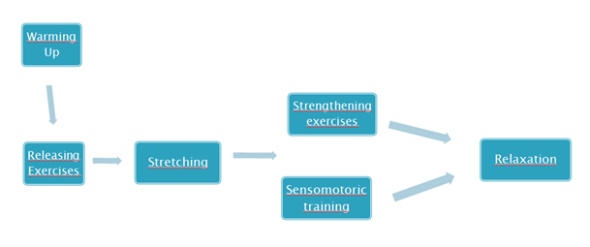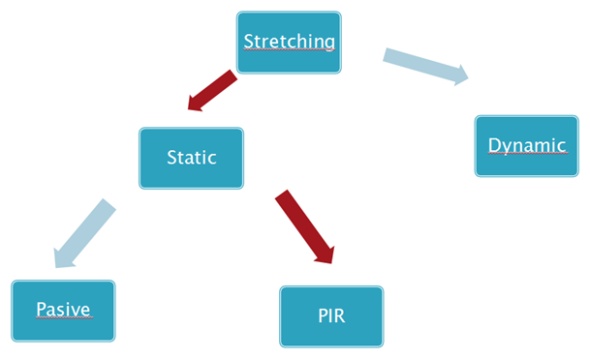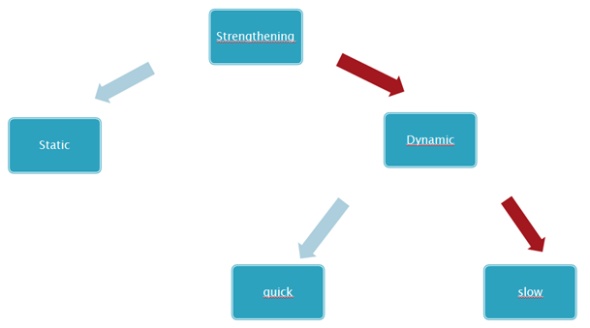Means of correction
Why Compensate
- Periodic compensation significantly reduces
- Muscle imbalances
- Chronic musculoskeletal injuries
- Nonspecific pain of locomotor apparatus
- Acute musculoskeletal injuries
- Significantly increases
- Neuromuscular coordination
- Power endurance
- Flexibility
- Proprioception

Fig. 1 Scheme of compensatory exercises
Releasing exercises
- Releasing exercises are always directed to a particular joint or motion segment. It allows better blood flow to soft tissues around the joint.
- Improved blood circulation and circulation of synovial liquid has generally positive effect on the mechanical features of soft tissues and cartilage.
- When making releasing exercises the movement is passive rather than active. Range of motion should correspond to the current functional capabilities of the joint.
Stretching
It allows to restore normal physiological muscle length. The muscle can be stretched without damage up to 1.8 times its base resting length. After stretching muscle remains about 5% longer, and to its original length is returning after 48 hours. Experimentally was verified that the sufficient time needed to fully stretch muscle is at least 30 seconds. The immediate effect of stretching is maintained for a period exceeding 24 hours, maximum 48 hours. That is why we should stretch muscles every second day. Restoration normal muscle length, we can expect in the correct procedure after the 3 to 4 months. We can use technique of passive stretching, post isometric relaxation, activation of antagonists.

Fig.2 scheme of stretching
Strengthening exercises
The aim is to increase the functional capacity of weakened muscles. This can be achieved only by active operations - by repetitive contractions of the muscle and overcoming some resistance. The positive effect of these exercises is to increase strength and functional capacity of muscle. Also increases the resting muscle tone and modifies the tonic imbalance in the corresponding motion segment. Regular strengthening will improve the ability of muscle to work longer economically it means his endurance. This will also improve intramuscular coordination, but also the cooperation of the muscle with other muscle groups. To compensate functional disorders of locomotor apparatus are the most suitable slow dynamic exercise and balancing - neuromuscular exercises.

Fig. 3 Scheme of strengthening exercises
Relaxation exercises
Relaxation exercises help to practice diaphragmatic breathing. With the help of these exercises, we learn to work with your body - consciously relax each body segment. We use them also for overall body relaxation at the end of exercise unit.
Regeneration
Regeneration is a biological and social process, which aims to restore balance and reversible decrease in functional abilities and individual body organs.
This is manifested by fatigue
- Physical
- Mental
- Physiological (local, general)
- Pathological (acute, chronic)
- Passive
- Sleep (and most effective natural method of regeneration)
- Active
- Other than the physical activity of sports (eg swimming, cycling, yoga ...)
- Drinking regime
- physical therapy
- Thermotherapy (sauna, cryotherapy)
- Massage (sports, regeneration, relaxation)